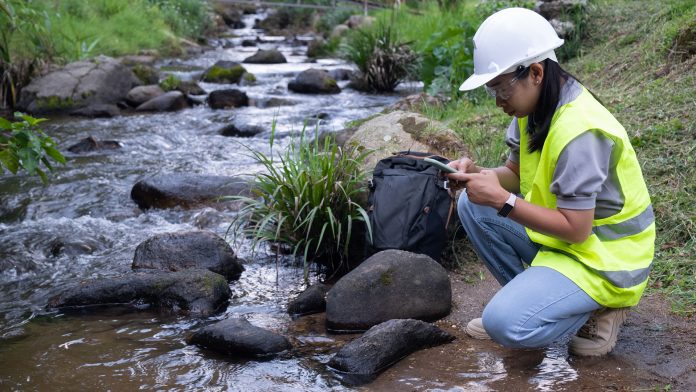Researchers from Nagoya University in Japan have reported that nitrate accumulated in soil bordering streams plays an important role in the increase of nitrate in water when it rains.
The research, published in Biogeosciences, details how nitrogen pollution can be reduced; helping to improve downstream bodies of water, such as lakes and nearshore waters.
The impact of nitrogen pollution
Nitrogen is an essential nutrient for plants and phytoplankton, but excessive levels of nitrates in water can damage water quality, cause eutrophication (the over-enrichment of water by nutrients), and pose health risks to animals and humans. The reasons for the rise in nitrate levels in streams when it rains are currently unknown, but scientists have produced a number of theories.
There are two leading theories of how stream nitrate increases as it rains. The first theory puts forward the idea that nitrate in the atmosphere dissolves into rainwater, falling directly into streams.
Alternatively, the second theory estimates that when it rains, soil nitrate in the area bordering streams, known as the riparian zone, flows into water.
Investigating the source of water nitrates
To further investigate what causes excessive presence of nitrogen in streams, the research team conducted a study to analyse changes in the isotopic compositions of nitrogen and water. They also studied the increase of nitrate concentrations in streams during rainstorms.
Previous studies have reported that nitrate concentrations significantly increase during storms in the streams of the upper Kajikawa River in Niigata, north-western Japan. The researchers collected water samples from the Kajikawa catchment area, comprising the streams of the upper part of the river. They used an automatic water sampler to take samples from the catchment stream water at one-hour intervals for 24 hours during three storms.
By measuring the concentrations and isotopic concentrations of nitrogen in water, the team were able to compare it with the levels of soil nitrate in the riparian zone. As a result, they found that most of the nitrate came from the soil in the zone rather than rainwater.
“We concluded that the flushing of soil nitrate in the riparian zone into the stream due to the rising of both stream water and groundwater level was primarily responsible for the increase in stream nitrate during the storm event,” said Dr Weitian Ding of Nagoya University, the corresponding author of the study.
The research group also analysed the impact of atmospheric nitrate on increasing stream nitrate during storms. Regardless of an increase in precipitation, atmospheric nitrate in stream water remained constant, suggesting that the atmospheric sources of nitrate had a minimal effect.
They also discovered that the soil nitrate found in the riparian zone was produced by soil dwelling microorganisms. “Microbe-derived nitrate is thought to be accumulated in soil in the riparian zone only during summer and autumn in Japan,” explained Professor Tsunogai.
“From this perspective, we can predict that the increase of stream nitrate due to rain occurs only in these seasons.” Understanding the seasonality of nitrate increases could be an important finding to help ensure safe fresh water.









